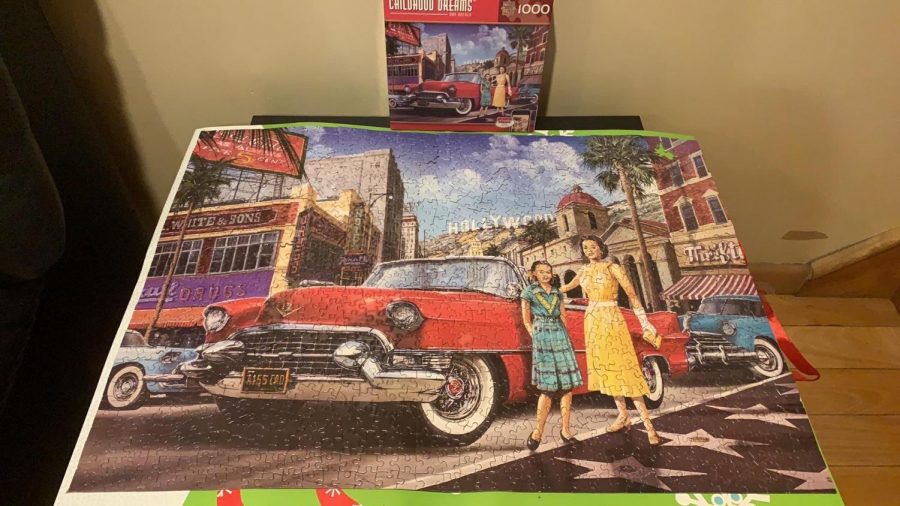Jigsaw Puzzle Companies’ Business is Booming During Quarantine
Here is the 1000-piece puzzle that Caitlyn Chen ’20 completed at home with her mom. “It took me five days and a lot of back pain, but we completed it,” Chen said.
Compared to their previously busy lives filled with school work and extracurricular commitments, students are now left to spend much more time alone in this time of social distancing and stay-at-home orders during the Coronavirus pandemic. Individuals now have the time to pursue hobbies that they did not have enough time for before. While there may be countless people picking up writing or video gaming, there is another hobby that has had a recent resurgence. For some, when they need to turn to their closets in search of something to do, they reach to grab the puzzle box. These quarantine puzzlers are not unique. Puzzle companies around the world have been trying to keep up with the new orders.
Ravensburger, a German producer making about $600 million with global sales, has been trying to meet the sudden surge of new demands. However, because the process of creating puzzles takes weeks, jigsaw puzzle companies cannot ramp up production as easily as other industries.
Each puzzle piece must be uniquely shaped from every other jigsaw piece in the puzzle. That means a puzzle of five hundred pieces has five hundred unique pieces hand drawn by workers in order to avoid incorrect placement by the customers. Each piece is sketched on paper over the finished image before the puzzles are cut. Then, metal pieces like cookie cutters are formed for each specific puzzle piece. Each metal piece takes about four weeks to build. With high demand, these metal pieces are used widely and can only be used a few times before the edges are dulled. Of course, the edges can be resharpened, but the metal puzzle pieces can only be resharpened once before they must be discarded. Additionally, the process of choosing an image is more complicated than choosing just one that catches the eye.
Ravensburger uses social media platforms in order to identify recent trends in what consumers want. The focus groups create a target customer and designers work with artists in order to create an image that will appeal to that customer. For example, the British Company Gibsons targets millennials using puzzle pieces featuring avocados. Puzzles that feature more details and wider variations of color have more appeal. After this testing, an image is selected and the pieces are designed. The “cookie cutters” for puzzles are laid on top of the larger picture and about 1,100 tons of pressure is applied to separate the pieces.
Once the puzzles are done, they are shipped out and distributed to people all over the world, like Angel Zhu ’20. “Since my brother and I were stuck at home, we bought two more puzzles and decided it would be a good time to start doing puzzles,” said Angel Zhu ’20. Another student Caitlyn Chen ’20 has also been doing puzzles at home. “My mom suggested that we do the jigsaw puzzle that we had in our basement, and I wanted to put the extensive amount of free time that I now have to good use, so we completed the puzzle,” said Chen ’20. Older residents in Britain have begun stocking up on puzzles. While jigsaw puzzle companies usually see sales increase during Christmas times, jigsaw companies are now seeing sales escalate tremendously. The director of Yorkshire Jigsaw, Joe Rushton, noted that the company has been receiving months’ worth of orders in only days.
In a time of great uncertainty, many of us are searching for solace in what we can and it seems that puzzles have become that solace.
“My mom suggested that we do the jigsaw puzzle that we had in our basement, and I wanted to put the extensive amount of free time that I now have to good use, so we completed the puzzle,” said Caitlyn Chen ’20.
Tina Ou is a staff reporter for ‘The Science Survey’ and the Copy Chief Editor for ‘The Observatory.’ Journalism is intriguing to Tina because...











